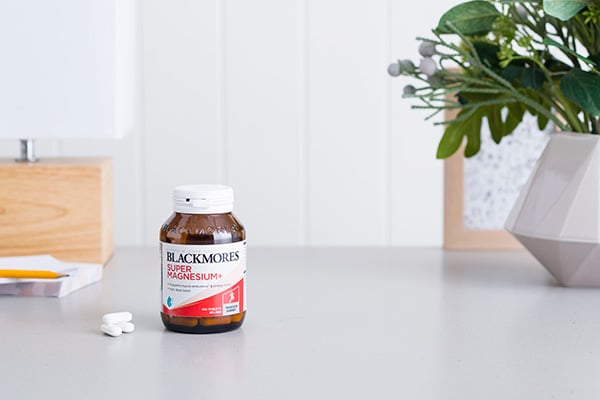
Discover the Benefits of a Magnesium-Rich Diet
1
Magnesium’s role in supporting healthy muscle function is well known, but its benefits don’t stop there. Learn more about why keeping your magnesium levels topped up is such a worthwhile pursuit.


| Food | Magnesium content |
| Cooked spinach (1 cup) | 156 mg |
| Tempeh (150 g) | 116 mg |
| Sunflower seeds (1/4 cup) | 115 mg |
| Quinoa (½ cup, cooked) | 63 mg |
| Almonds (30 g) | 80 mg |
| Cashews (30 g) | 74 mg |
| Jacket potato (1 medium) | 50 mg |
| Brown rice (½ cup, cooked) | 42 mg |
| Kidney beans (½ cup, canned) | 35 mg |
| Banana (1 medium) | 32 mg |
| Atlantic salmon (85 g, cooked) | 26 mg |
| Chicken breast (85 g, roasted) | 22 mg |
Taking a magnesium supplement such as Blackmores Super Magnesium+ may help to relieve muscle cramps and mild spasms when dietary intake is inadequate.
Super Magnesium+ contains two easily absorbed forms of magnesium (amino acid chelate and citrate) and also supports energy levels, muscle endurance and body electrolyte balance, when magnesium levels are low.
